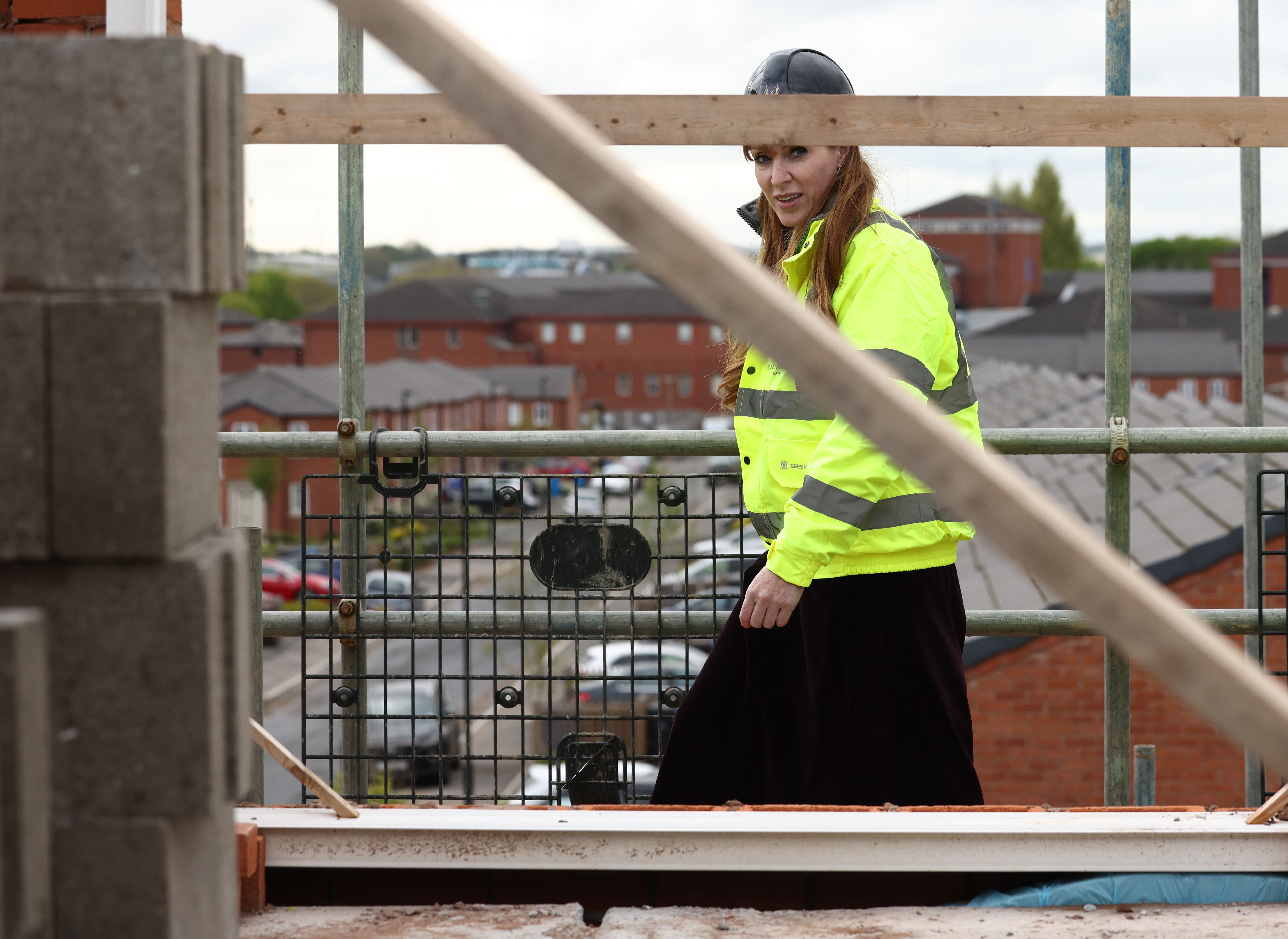Could a kitchen renovation come to Angela Rayner’s rescue?
If you’ve struggled to keep up with the saga over the deputy Labour leader’s council house, James Moore offers an easy explainer – and reveals how doing up the place before she sold it may put her in the clear


By now, you will have heard about Angela Rayner and her little local difficulty around whether or not she paid the right amount of tax on the sale of a property she once owned in Stockport before she became an MP. You’ll have heard all about it – shall we call it council housegate? – but, unless you’ve paid as close attention to the ins and outs as, say, journalists on right-wing newspapers, you may have struggled to comprehend what Labour’s deputy leader is alleged to have done wrong, allegations that she has denied.
It’s a twisty-turny tale but here’s the short version: while working as a local council care worker and official for Unison, Rayner bought the council house where she was living in Vicarage Road, Stockport. The purchase, in 2007, qualified for a 25 per cent discount under the “right-to-buy” scheme, so she paid £79,000 for it. I know, I know – given today’s house prices, that looks like witchcraft.
She subsequently sold it, in 2015, for £127,500, apparently netting a tidy profit of £48,500. (We’ll get to that.)
This would not be a problem if it were her primary residence, as she has claimed: any gain from the sale of your primary residence qualifies for private residence relief at 100 per cent. There are a handful of conditions but they’re fairly technical in nature and not relevant to most of us.
However, the charge flung at Rayner is that the Vicarage Road property was not her private residence when it was sold and that she was, in fact, living at her now ex-husband’s home in Lowndes Lane.
This would make that profit liable for capital gains tax (CGT). Bear in mind, too, that a married couple can only have one principal residence. For the purposes of the relief, the pair of you can’t live separately, even if they do in practice.
However, a renovated kitchen may yet ride to Rayner’s rescue.
Bear with me on this – we have to bring this one to the boil. First, we have to discuss the taxable part of that profit. It might be quite a bit less than it looks.
Even if Vicarage Lane wasn’t Rayner’s principal residence at the time, she would still have had a tax-free capital gains allowance to offset it. That was £11,000 in 2014-15, and £11,100 in 2015-16 with the start date of April in each case, always assuming she made no other taxable gain in that year, which is a fair assumption to make. Rayner was elected as an MP in 2015, which comes with a generous salary but not one that makes you rich unless you already are. Rayner’s popularity is partly down to the fact that while most MPs, of all parties, come from the ranks of the wealthy and privileged, she does not.
Let’s take the lower of the two, for simplicity’s sake. This takes the taxable profit down to £37,500. But there is more good news for Rayner. She can further reduce it by deducting various expenses. These include legal fees, both on purchase and sale as well as the fees/commissions paid to the estate agent.
Now that those side dishes are cooked, we can turn our attention to the roast: the kitchen.
To further reduce the taxable profit, the kitchen would not just have to be a like-for-like replacement. It would have to be a substantially better one. It would have to qualify as an enhancement to lower the taxable profit for CGT purposes.
The excellent Chris Thorpe, technical officer with the Chartered Institute of Taxation, explained it to me like this: “Enhancement expenditure is expenditure wholly and exclusively incurred on a property which enhances its value and which is reflecting in the state/nature of that property at the time of sale.
“It cannot be a ‘revenue’ cost, eg, maintenance or repairs, day-to-day costs or replacing like-for-like. Those are offset against rent received (so income) subject to income tax; CGT is a capital tax so you look for capital expenditure to offset against the proceeds of sale and reduce the chargeable gain.”
Put simply: a new kitchen would take another chunk off that tax if it were a better kitchen. I think it’s safe to assume that it was.
Looking at that, you might well think, wait... you pump money into a second property to doll it up and (when you sell) increase your profit on it and you also can use it to reduce the tax paid on that profit? That seems a bit off. Welcome to the world of taxation.
Even after deducting all the costs I mentioned from our notional profit, Rayner would have to have bought a fairly swanky kitchen to completely wipe it out. Maybe it was. And even if it wasn’t, other home improvements she may have made during her ownership could have provided additional help.
Only after all these deductions would tax be incurred on the remaining profit, at a rate of 28 per cent for top-rate payers (as MPs are and Rayner’s was) at the time. Chancellor Jeremy Hunt has since reduced it to 24 which is very handy for the property owners in the House of Commons.
As for Angela Rayner, even if this wasn’t her primary residence and there is ultimately some unpaid tax here, we’re probably talking about a very small sum indeed, in the grand scheme of things. Small potatoes, you might say. Now, then – what’s for dinner?






Join our commenting forum
Join thought-provoking conversations, follow other Independent readers and see their replies
Comments